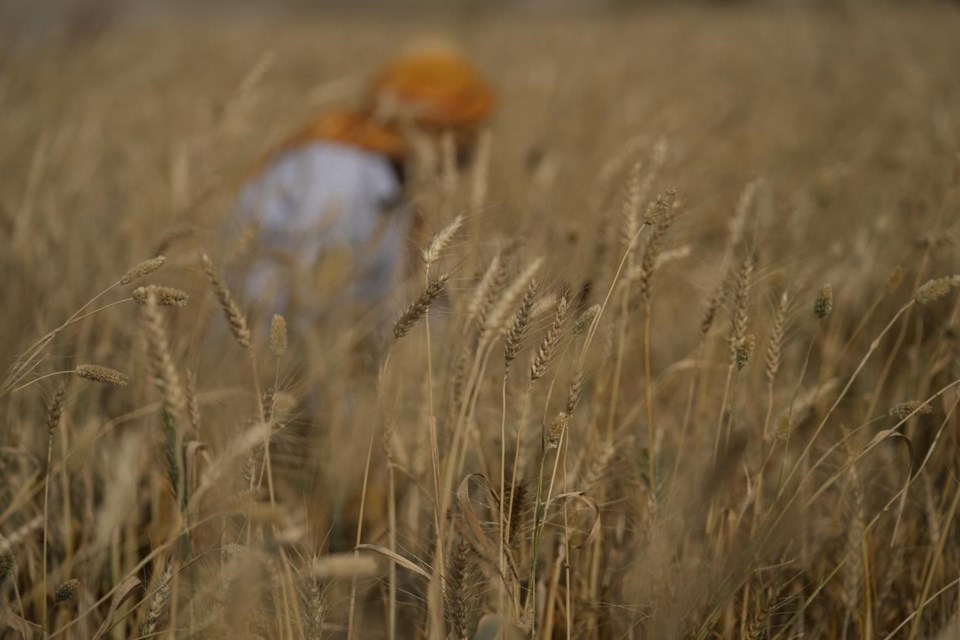BENGALURU, India (AP) — The full extent of the damage from India's sizzling heat that's causing more deaths, illnesses, school shutdowns and crop failures is underestimated by lawmakers and officials in the country and slowing the nation's development, a study Wednesday said.
Extreme heat is placing 80% of India's 1.4 billion population in danger but assessments of how vulnerable the country is to climate change don't take into account how much the searing temperatures in recent decades are hampering goals like reducing poverty and improving health outcomes across India's population, researchers at Cambridge University in England found in a peer-reviewed study.
“It is high time that climate experts and policymakers reevaluate the metrics for assessing the country’s climate vulnerability,” said Ramit Debnath, the lead author of the study.
India has seen an uptick in sweltering temperatures caused by climate change from the burning of coal, oil and gas, with an early heat wave in March and April last year breaking heat records in India and neighboring Pakistan. Scientists were able to attribute last year's exceptional heat to human-made climate change and warned of worse to come as global average temperatures continue to creep upwards.
Debnath and a team of researchers analyzed the methods currently used to work out India’s vulnerability to heat and climate change alongside measurements of the country’s progress toward goals like eliminating poverty and hunger and promoting equity, health, education and curbing climate change — known as the United Nations' Sustainable Development Goals.
Those goals will only be harder to reach the hotter it is, with the pace that India is progressing toward sustainable development aims already having slowed in the past 20 years because of more severe weather extremes, the study said.
Debnath said that while India’s climate risks are mostly robustly measured, how hot a particular place actually feels for people depending on humidity levels is not taken into account, meaning assessments of how on course the country is to meeting goals on improving health or reducing inequality are likely overoptimistic.
The study calls for an overhaul on how progress on development goals is measured to reflect the gravity of extreme heat in the country.
India is already experiencing roasting temperatures this year and some states are currently in the midst of another heat wave: On Sunday 11 people died and several others fell ill as they waited in a blistering 38 degree Celsius-heat (100 degree Fahrenheit) for a public event organized by the local government to begin in the outskirts of the Indian city of Mumbai. The eastern Indian state of West Bengal closed all colleges this week due to scorching heat. This February was recorded as the warmest February in the country in 122 years.
The study “highlights that heat risk is an additional layer of risk that is emerging quite quickly," said Aditya Valiathan Pillai, an associate fellow at New Delhi-based think-tank, Centre for Policy Research. Pillai had recently studied India's readiness to respond to extremely hot weather.
The new research does draw useful links between increasing heat and its consequences on India's development, Pillai said, but at the same time the study's datasets — which look only at temperatures in April last year — were limiting.
But he said it's nevertheless encouraging to see more research on the consequences of heat on India's population being published.
More states are burning up under extreme temperatures and already heat-stressed regions are experiencing a growing number of days in near-unlivable temperatures.
“For India as a whole, the threshold for adapting to heat and other climate impacts will be reached in a few decades from now," said Pillai. “For some, especially the poor, these limits have already been reached.”
___
Follow Sibi Arasu on Twitter at @sibi123
___
Associated Press climate and environmental coverage receives support from several private foundations. See more about AP’s climate initiative here. The AP is solely responsible for all content.
Sibi Arasu, The Associated Press



